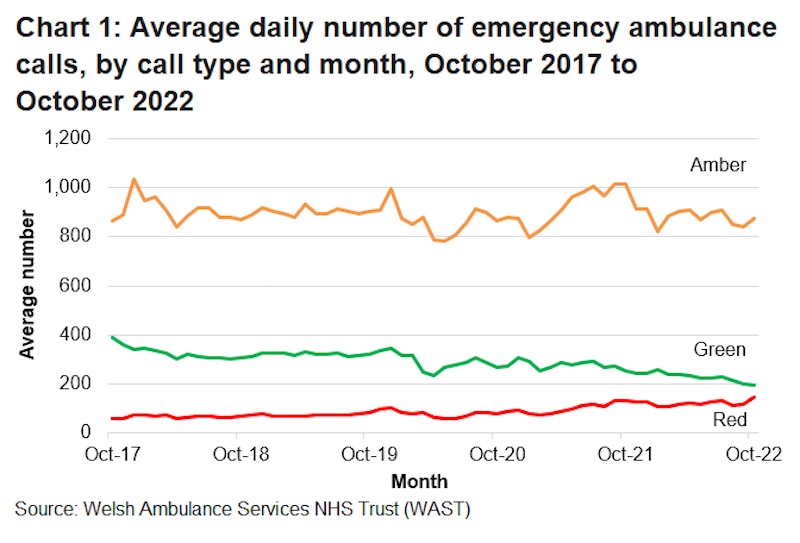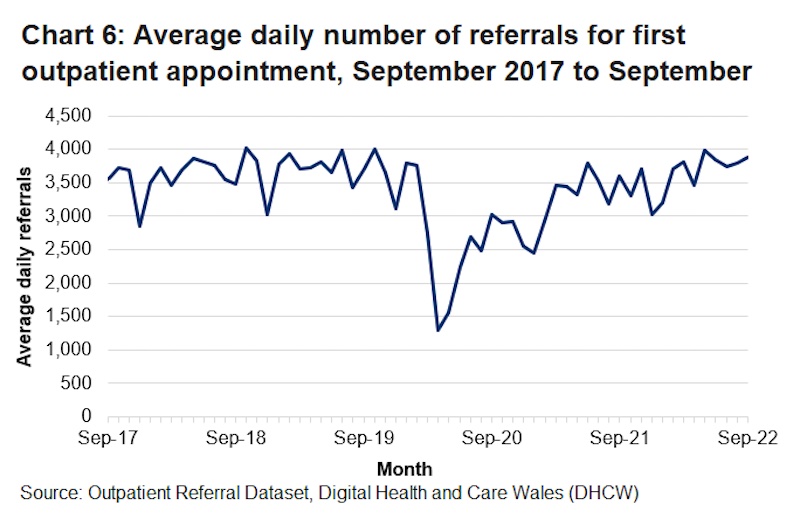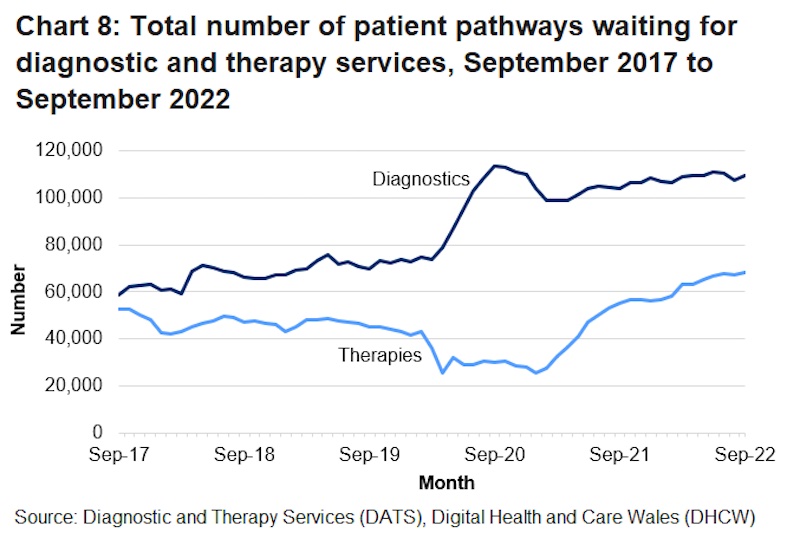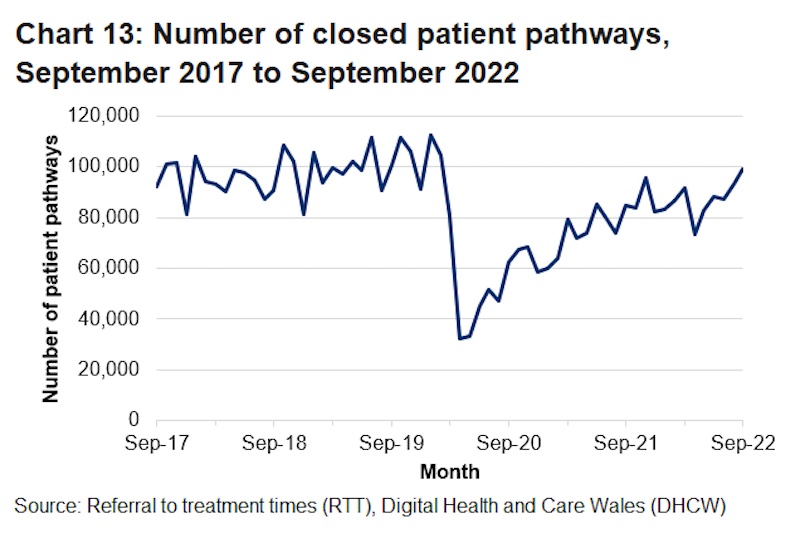Calls for urgent action after “lowest on record” ambulance response times in Wales

Ambulance response times hit their worst on record in Wales last month, with less than half of life-threatening calls receiving a response in eight minutes.
Just 48 per cent of category red calls were attended within the target time in October, dropping below the previous worst recorded time of 50 per cent in September of this year.
This is below the target of attending 65 per cent of life threatening calls within eight minutes.

Over 37,500 emergency calls were made to the Welsh Ambulance Service during last month, averaging 1,213 calls per day.
Of those around 147 red calls – classed as immediately life threatening such as a cardiac arrest- were made per day during October.
This is the highest number on record and the seventeenth month in a row where on average there were more than 100 immediately life threatening calls per day.

Figures released today also show across Wales there were over 91,000 attendances to all NHS Wales emergency departments during October.
This was an average of 2,949 emergency department attendances per day; 70 attendances more per day on average than in the previous month.
In Wrexham just over 50 per cent of people who visited the Maelor hospital were seen within the four hour target time, which is on par with the previous month.
However it remains below the Welsh Government target of 95% of new patients spending less than four hours in emergency departments from arrival until admission, transfer or discharge
69.6 per cent were seen within eight hours and 79.9 per cent were seen within a 12 hour period.

Today’s figures also show that the number of patient pathways has also increased, rising from 750,283 in August 2022 to 754,677 in September 2022.
The Welsh Government say that the number of patient pathways is not the same as the number of individual patients, because some people have multiple open pathways.
This means that there were around 590,000 individual patients on treatment waiting lists in Wales, an increase of about 2,100 patients from the previous month.
In North Wales there are 173,351 patient pathways, with 92,000 waiting up to 26 weeks to start treatment.

Responding to today’s figures Welsh Conservative and Shadow Health Minister Russell George MS has reiterated calls for surgical hubs and “winter war rooms” to cope with the pressure over the coming months.
He said: “When we see nearly a quarter of the population on an NHS waiting list, the slowest ambulance response times on record, and Britain’s worst A&E waits, I think it is more than fair to say that NHS Wales’ ability to treat patients stands upon the edge of a knife.
“All of this is compounded with a near-nationwide nurses strike and a secondary waiting list where an additional 460,000 people are waiting for follow-up appointments for their treatment, which is clearly affecting the wellbeing of staff as well as patients.
“I simply do not understand why Labour ministers are ignoring are calls for surgical hubs and winter war rooms to deal with these dangerously long waiting times when we see them leading to very visible progress in England.
“But should we expect anything different from a Labour Government that said it would be ‘foolish’ to publish an NHS recovery plan before the pandemic ended – an attitude that has led us to this very situation?
“Labour need to get a grip on the NHS and stop breaking all the wrong records.”

Responding to the news that Welsh ambulance response times have hit their slowest on record ever for red calls Jane Dodds MS said: “When someone is in a moment of crisis and chooses to call 999, they want to know that there will be someone at the other end of the line able to help them.
“These figures should set emergency lights flashing for the Welsh Government. Labour has often used the pandemic as an excuse but ambulance services were struggling in Wales long before COVID.
“It is especially appalling that once again those in rural areas like my own region will bear the brunt of this crisis, in Hywel Dda Health Board a staggering 61% of red calls are not being answered within target times, in Powys it is 59%.
“The significant delays in ambulance response times are most often due to backlogs at A&E departments resulting in patients having to wait in ambulances outside.
“What we need to see is real investment in primary health services in local communities, including our GPs to prevent these build-ups at emergency departments and to prevent people from falling into such ill health they require emergency treatment.
“Just this month we revealed Labour aren’t hitting the 200 GPs a year target Wales needs.
“Labour must get a better handle of this crisis as soon as possible.
“Swift action might be the difference between life and death.”

However the Welsh Government have argued that it is “driving improvements” in the ambulance service and recruiting more staff.
A Welsh Government spokesperson said: “Our NHS continues to face unprecedented demand and is seeing thousands of people every day. In hospitals alone, more than 361,000 consultations were carried out in September.
Over 99,000 patient pathways were closed in September, back to pre-pandemic levels and 6% more than August, and an all-time record 13,856 people were seen and told they don’t have cancer.
“Progress continues to be made on the longest waits. The number of patient pathways waiting more than two years for treatment has fallen for the sixth month in a row and is down by 19 per cent since the peak in March. Waits over 36 weeks also went down in September, by 3% compared to August.
“Primary care, ambulance and emergency department staff remain under intense pressure. As an example, October saw the highest number and proportion of ‘red’/ immediately life threatening calls on record.
“A further indication of the complexity of patient need is the number of patients admitted to the same or a different hospital following attendance at a major emergency department, which was 27.1% higher than September 2022.
“Whilst we acknowledge ambulance performance is not where we expect it to be, we are driving improvements, including extending same-day emergency care services to open seven-days a week, managing calls better to reduce hospital admissions and recruiting more staff. Without all this the pressure on the system would be even greater.”
Spotted something? Got a story? Email: [email protected]
Latest News
